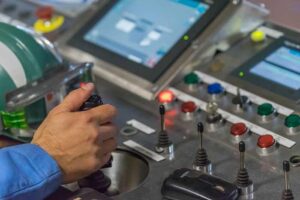
Mechanical system optimization is a fascinating area that focuses on enhancing the performance and efficiency of mechanical systems across various industries. Whether in manufacturing, automotive, or aerospace sectors, the significance of optimizing these systems cannot be overstated. It not only leads to cost reductions and improved reliability but also fosters innovation and sustainability in operations.
This discussion delves into the principles, techniques, and tools that are essential for effective mechanical system optimization. By exploring real-world applications and successful case studies, we can appreciate the transformative power of optimization in driving progress and efficiency.
Introduction to Mechanical System Optimization
Mechanical system optimization refers to the systematic approach of improving the performance, efficiency, and longevity of mechanical systems across various industries. This process holds great significance as it directly contributes to cost savings, enhanced product reliability, and improved operational efficiencies. Various sectors such as automotive, aerospace, and manufacturing benefit immensely from these optimizations, leading to increased competitiveness in the market.The main objectives of optimizing mechanical systems involve maximizing performance while minimizing costs and resource usage.
This optimization process can yield multiple benefits, including reduced energy consumption, extended equipment lifespan, and superior product quality. For example, in the automotive industry, optimizing engine performance can lead to higher fuel efficiency and lower emissions, showcasing a tangible benefit to both manufacturers and consumers alike.
Principles of Mechanical System Optimization

Key principles that govern mechanical system optimization encompass a range of factors that ensure the effectiveness of the optimization process. Efficiency and performance are paramount; optimizing systems isn’t simply about cost reduction, but also about improving speed and reliability. The right balance between these elements can lead to systems that perform better under various operational conditions.Materials and design considerations play a crucial role in the optimization processes.
Selecting lightweight yet durable materials can significantly enhance efficiency, while innovative design techniques can further push the boundaries of performance. For instance, the use of composite materials in aerospace applications has revolutionized aircraft design, leading to systems that are both lighter and stronger.
Techniques for Mechanical System Optimization
Several techniques are employed in mechanical system optimization to refine system performance. Simulation is one of the most utilized methods, allowing engineers to model and predict how systems behave under different scenarios without the need for physical prototypes. Modeling further enhances this by providing a visual representation of system dynamics.Iterative design is another essential technique, where designs are continuously refined through cycles of testing and feedback.
Analyzing system performance involves methods such as data collection and statistical analysis to identify inefficiencies and areas for improvement. Here’s a comparative overview of some optimization techniques:
- Simulation: Offers predictive insights without physical testing.
- Modeling: Visualizes system interactions and behaviors.
- Iterative design: Enhances designs through continuous feedback loops.
Tools and Software for Optimization
The landscape of mechanical system optimization is bolstered by a variety of tools and software that assist engineers in their endeavors. Some popular tools include ANSYS for simulation, SolidWorks for modeling, and MATLAB for data analysis. Each tool has its specific functionalities tailored to different optimization needs.
| Tool | Functionality | Applications |
|---|---|---|
| ANSYS | Finite Element Analysis (FEA) | Structural and thermal analysis |
| SolidWorks | 3D modeling and simulation | Product design and assembly |
| MATLAB | Data analysis and algorithm development | Performance optimization and control systems |
Customer Service in Mechanical System Optimization
Effective customer service significantly enhances mechanical system optimization projects as it establishes a channel for clear communication between clients and engineers. Feedback mechanisms are essential throughout the optimization process; they ensure that the final output meets client expectations and industry standards.Strategies for improving customer satisfaction during optimization projects include regular updates on progress, soliciting client input at various stages, and being responsive to concerns.
A strong customer service framework fosters trust and collaboration, ultimately leading to better project outcomes.
Entrepreneurialism in Mechanical System Innovation
Entrepreneurialism plays a vital role in driving innovation within the realm of mechanical system optimization. Startups and forward-thinking businesses are constantly seeking novel approaches to enhance mechanical efficiencies. For instance, companies like Xpansiv are transforming energy markets through advanced digital optimization techniques.Entrepreneurs in this field face unique challenges, such as funding and competition, but also have opportunities to innovate using cutting-edge technologies like AI and machine learning.
These innovations can lead to breakthrough products that redefine industry standards.
Business Ethics in Mechanical System Practices
Ethical considerations are paramount in mechanical system optimization, particularly regarding transparency and accountability. Best practices such as thorough documentation, adherence to industry standards, and responsible sourcing of materials help maintain integrity in optimization projects.Case studies illustrate the ethical dilemmas companies may face, such as the conflict between cost-cutting measures and product safety. Addressing these dilemmas through a principled approach ensures that ethical standards are upheld while pursuing optimization goals.
Business Franchising and Mechanical Systems
The relationship between business franchising and mechanical system optimization is increasingly relevant as franchises seek to streamline operations. Optimized mechanical systems can lead to significant cost savings and improved efficiency across franchise locations.Successful franchising models, such as fast-food chains implementing optimized supply chain systems, showcase the benefits of adopting advanced mechanical systems. These optimizations lead to better consistency in product quality and service delivery.
Furnishings and Supplies for Optimization Projects
Key furnishings and supplies are essential for the successful execution of mechanical system optimization projects. The right tools and materials contribute significantly to the optimization process by ensuring precision and effectiveness in implementation.Essential supplies for mechanical system optimization projects include:
- 3D printers for prototyping
- Advanced software tools for simulation and modeling
- Quality materials for construction and testing
Human Resources in Mechanical System Optimization
Human resources are critical in driving mechanical system optimization. Training and development strategies for staff involved in these projects enhance skill sets and ensure that team members are equipped to meet optimization goals.Assessing employee performance in relation to optimization targets involves setting clear KPIs and conducting regular reviews. A well-trained workforce can significantly impact the success of optimization initiatives through innovative thinking and problem-solving capabilities.
Industrial Mechanical Systems and Optimization
Industrial mechanical systems play a pivotal role in the optimization landscape, as they are often the backbone of manufacturing processes. Unique challenges such as equipment variability, maintenance needs, and production goals must be addressed to achieve successful optimization.Examples of successful industrial optimization initiatives can be seen in factories adopting lean manufacturing principles, which streamline operations and reduce waste. These practices not only improve efficiency but also enhance overall productivity and employee morale.
Outcome Summary
In summary, the journey through mechanical system optimization reveals its critical role in enhancing operational performance and efficiency. As industries embrace advanced techniques and innovative tools, the potential for optimization will continue to evolve, offering exciting opportunities for future developments. Ultimately, mastering these optimization strategies is key to staying competitive and achieving success in today’s fast-paced environment.
Question & Answer Hub
What is mechanical system optimization?
It is the process of improving the efficiency and performance of mechanical systems through various techniques and tools.
Why is mechanical system optimization important?
It helps reduce costs, improve system reliability, and promote innovation in various industries.
What techniques are commonly used in optimization?
Popular techniques include simulation, modeling, and iterative design methods.
How can software tools assist in optimization?
Software tools provide functionalities for modeling, analysis, and performance evaluation, streamlining the optimization process.
What role does human resources play in optimization projects?
Human resources are crucial for training, development, and assessing employee performance related to optimization goals.





